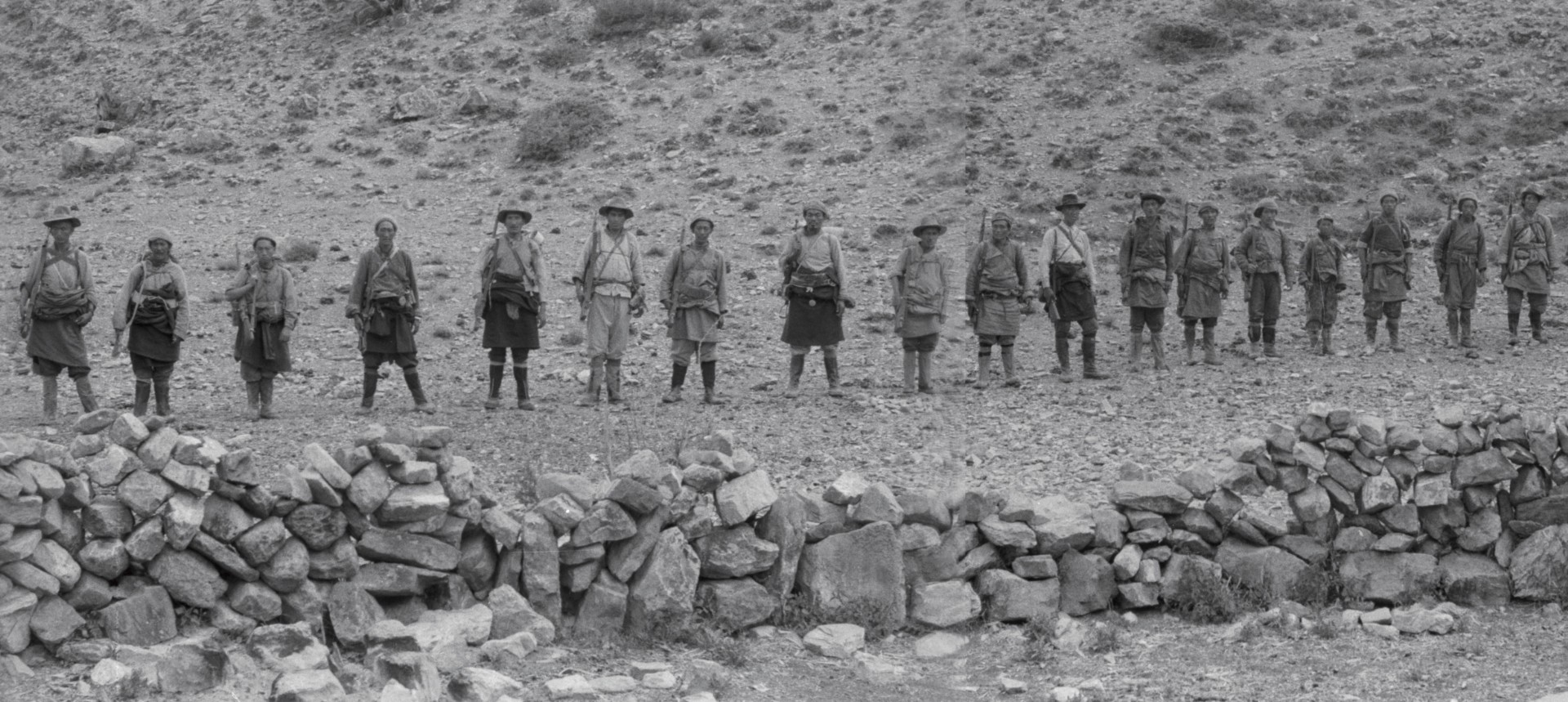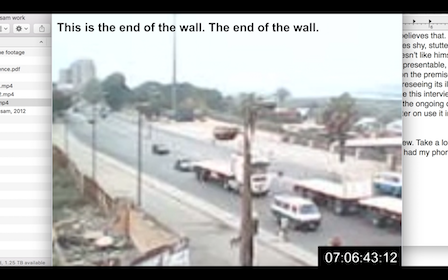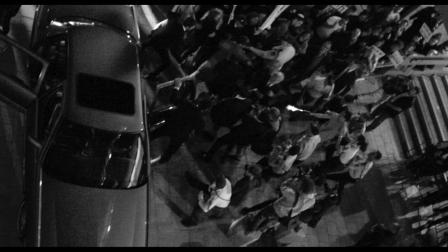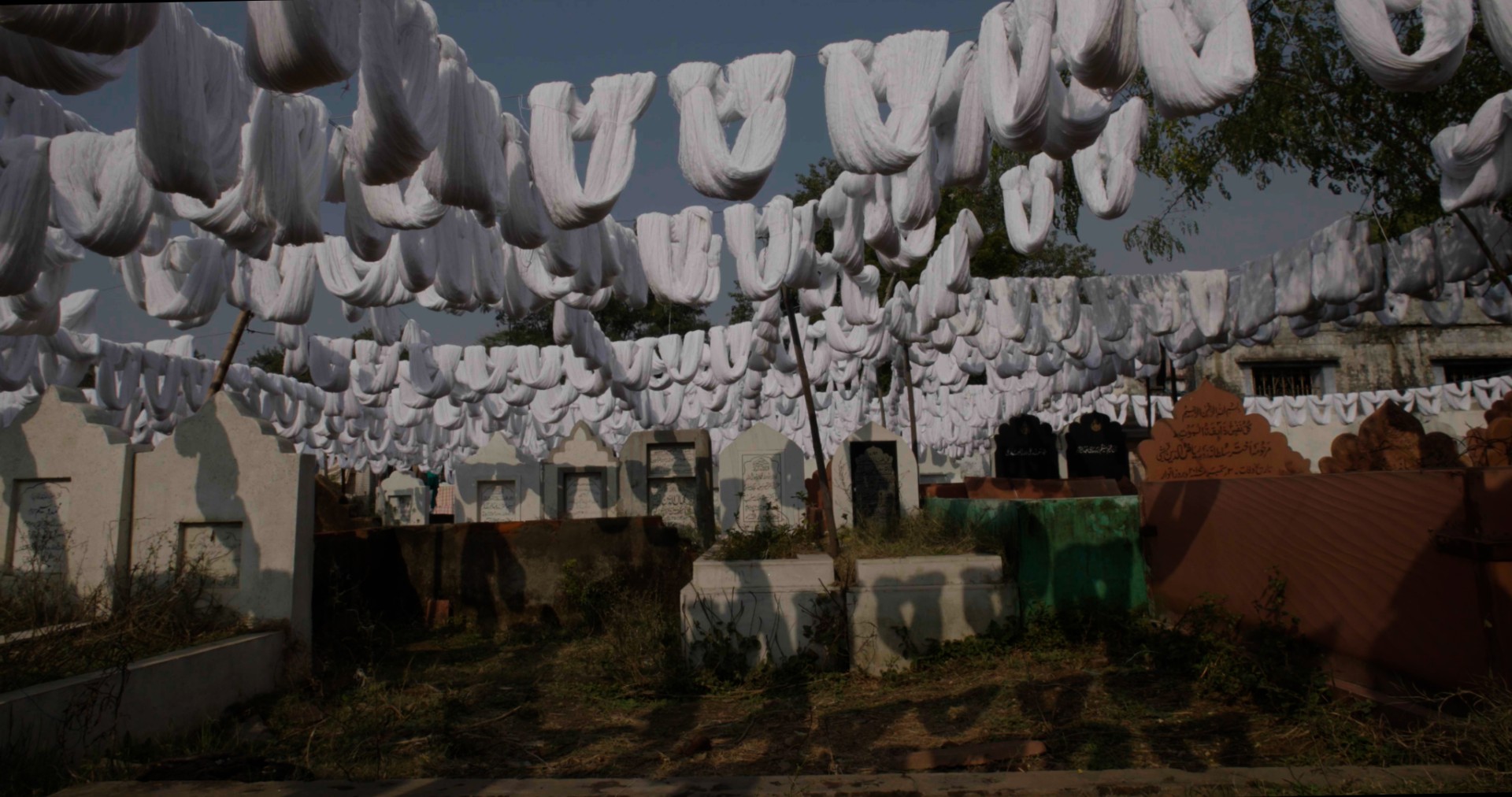shadow Circus
Exhibition in the framework of Forum Expanded at Berlinale
With Ritu Sarin and Tenzing Sonam
Opening 07.02.2019 19:00 With a performance by Loten Namling
On Show 08.02.–10.03.2019 Daily 14:00–19:00
Finissage 10.03.2019 17:30
Guided Tours
09.02.2019 16:00 With the artists Ritu Sarin and Tenzing Sonam (English)
10.02.2019 12:00 With the artists Ritu Sarin and Tenzing Sonam (English)
14.02.2019 13:00 With the curators in the presence of the artists (English)
19.02.2019 17:00 With curator Natasha Ginwala (English)
23.02.2019 15:00 With assistant curator Krisztina Hunya (German)
Since the Communist Chinese invasion of 1949, Tibet has been a country under occupation. The exhibition Shadow Circus revisits an overlooked chapter in the recent history of Tibet: the armed struggle for freedom that spontaneously erupted in response to the Chinese aggression, which then became entangled in global geopolitics when the CIA got involved in 1956. Code-named ST Circus, it was one of the CIA’s longest running covert operations until it was abruptly abandoned in the late 60s.
Filmmakers Ritu Sarin and Tenzing Sonam researched the subject for many years and made a BBC-commissioned documentary – The Shadow Circus: The CIA in Tibet (1998) – that focused on the CIA’s support and betrayal of the Tibetan freedom fighters. They were inspired by Tenzing’s father, Lhamo Tsering, one of the leaders of the resistance and the key liaison between the Tibetans and the CIA.
Shadow Circus re-evaluates the audiovisual material that they gathered over the years, and for the first time presents a re-edited version of their documentary, along with photographs, documents, letters, CIA surveillance maps of Tibet, and excerpts from interviews with former CIA agents and guerrilla operatives.
The Cold War epoch is navigated within a third space, as an ‘uneasy alliance’ beyond the geopolitical power blocs and bilateral relations to examine forms of intelligence gathering, guerrilla warfare and clandestine resistance in Tibet, that continues to resonate today as part of an unfinished project of freedom.
The filmmakers foreground the subjective position of an intermediary between the CIA and members of the Mustang Resistance Force: Lhamo Tsering, whose personal archive is staged to confront the complexities of an occupied terrain, wherein individual aspirations and national interests fail to provide a symmetrical historic trajectory.
The unresolved nature of the militant image and its ethics of circulation become points of potent inquiry during this pivotal time in Tibet’s armed liberation movement and the international ‘alliance building’ that included one of the most networked intelligence services in the world. The ultimate betrayal of the Tibetan struggle by the CIA was a foregone conclusion but the deeply personal and lasting emotional bonds that formed between Tibetan resistance fighters and their CIA trainers in the course of their brief and unlikely encounter muddies preconceived notions of power relations and demands another line of inquiry.
Photography critic and author Teju Cole writes “In a time of surveillance and snitchery, being looked at far from being the same as being seen is often its exact opposite. Looking is extractive, but seeing is relational. Survival depends on knowing the difference.” It is this threshold of invisibility and detectability that becomes animated while annotating secret alliances from the inside of a rebellion; there is only a shifting ground and the camouflage of a rebel identity with a tactical handbook, borrowed names and lives on edge. We ask ourselves, how this archival evidence may speak truth to power by extracting new forms of collective intelligence that are a counterpoint to the extractive condition of surveillance by the world powers. How do we consider this obscured lineage of decolonization in a post-Cold War world rife with nationalist agendas?

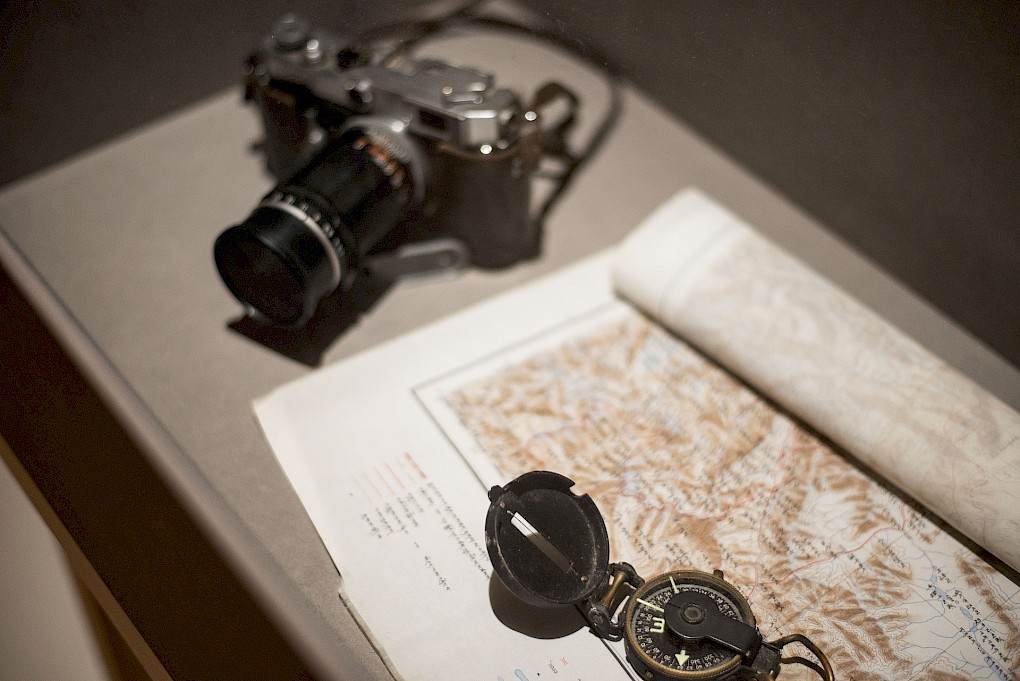
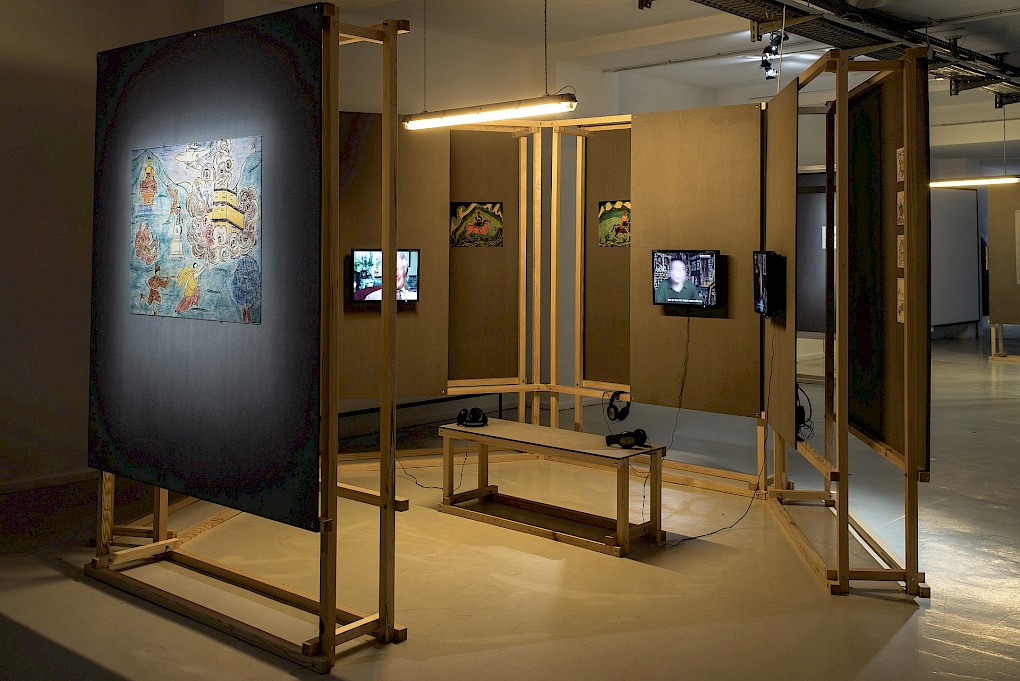
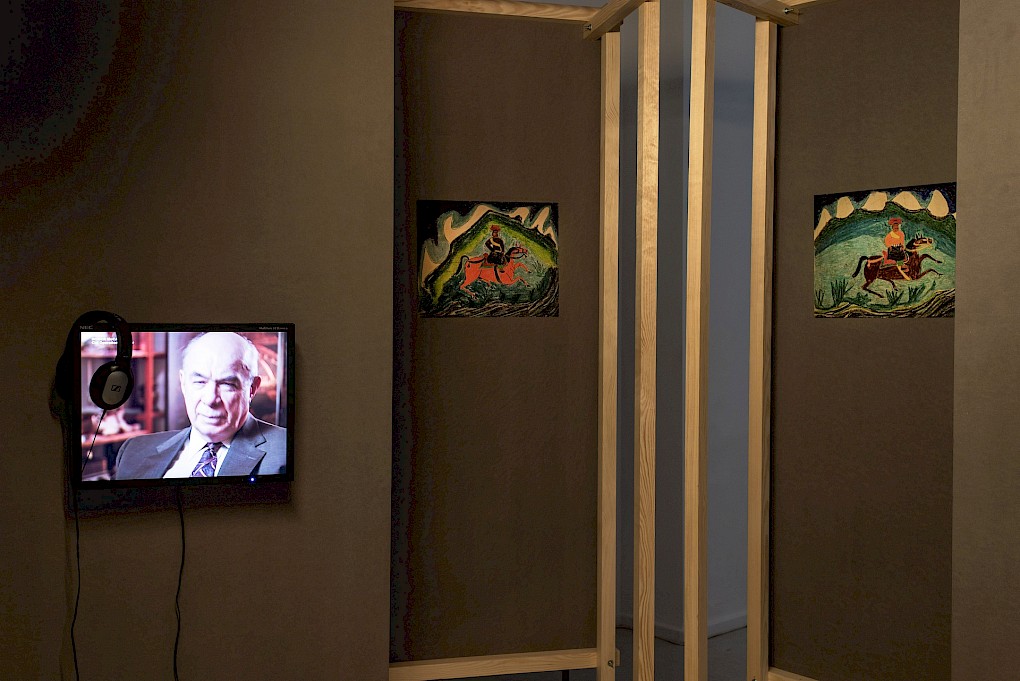
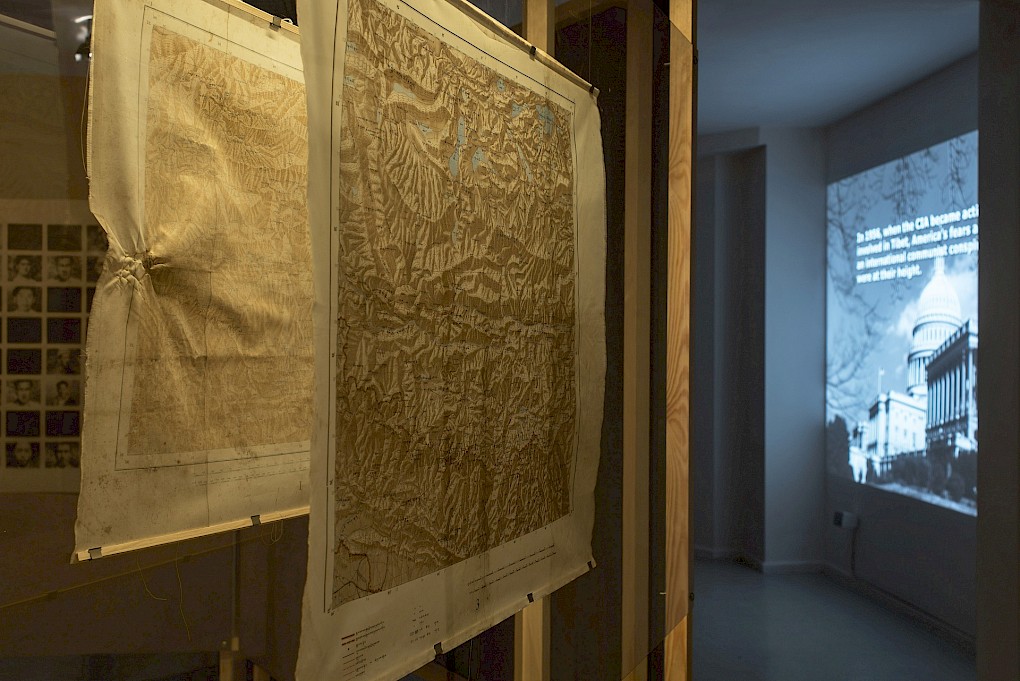




Ritu Sarin and Tenzing Sonam have been working together since their student days in the San Francisco Bay Area. They lived in London for many years working as independent filmmakers, before returning to India in 1996. They are currently based in Dharamshala and Delhi. A recurring subject in their work is Tibet—forming an intimate engagement at different levels: personally, politically and artistically. Through their films and artistic work, Sarin and Sonam have attempted to document, question and reflect on the questions of exile, identity, culture and nationalism that confront the Tibetan people. Another concern is the transformation and transmutation of societies through globalisation.
They have made several award-winning documentary films and video installations. Their documentary, The Sun Behind the Clouds (2009), won the Vaclav Havel Award at the One World Film Festival in Prague. They also made the Tibetan feature film, Dreaming Lhasa (2005), produced by Jeremy Thomas and Richard Gere, which premiered at the 2006 Toronto International Film Festival. Their video installations have shown at the Contour Biennale 8, Busan Biennale, Mori Art Museum, Thyssen-Bornemisza Art Contemporary (Vienna) and Khoj Studios (Delhi), among other venues. Their most recent work, The Sweet Requiem is a narrative feature film with a Tibetan cast and premiered at the Toronto International Film Festival 2018. Sarin and Sonam are also the directors of the Dharamshala International Film Festival, one of India’s leading independent film festivals, which they founded in 2012.
Natasha Ginwala is a curator and writer. She is Associate Curator at Gropius Bau, Berlin and Festival Curator, COLOMBOSCOPE (2019), Colombo. Ginwala has curated Contour Biennale 8, Polyphonic Worlds: Justice as Medium and was Curatorial Advisor for documenta 14, 2017. Other recent projects include Arrival, Incision. Indian Modernism as Peripatetic Itinerary in the framework of “Hello World. Revising a Collection” at Hamburger Bahnhof - Museum für Gegenwart, Berlin, 2018; Riots: Slow Cancellation of the Future at ifa Gallery Berlin and Stuttgart, 2018; My East is Your West at the 56th Venice Biennale, 2015; and Corruption: Everybody Knows… with e-flux, New York, 2015. Ginwala was a member of the artistic team for the 8th Berlin Biennale for Contemporary Art, 2014, and has co-curated The Museum of Rhythm, at Taipei Biennial 2012 and at Muzeum Sztuki, Łódź, 2016–17. From 2013–15, in collaboration with Vivian Ziherl, she led the multi-part curatorial project Landings presented at various partner organizations. Ginwala writes on contemporary art and visual culture in various periodicals and has contributed to numerous publications. Ginwala is a recipient of the 2018 visual arts research grant from the Berlin Senate Department for Culture and Europe.
Bonaventure Soh Bejeng Ndikung (born in 1977 in Yaoundé, Cameroon), is an independent curator, art critic, author and biotechnologist. He is founder and artistic director of SAVVY Contemporary Berlin. He was curator-at-large for documenta 14 in Athens and Kassel, and guest curator of the 2018 Dak'Art Biennale in Senegal. Together with the Miracle Workers Collective, he will curate the Finland Pavilion at the Venice Biennale in 2019. He is currently guest professor in curatorial studies and sound art at the Städelschule in Frankfurt.
Recent curatorial projects include: Geographies of Imagination: Dis-Othering as A Method, SAVVY Contemporary, 2018; Whose Land Have I Lit on Now? Contemplations on the Notions of Hostipitality, SAVVY Contemporary, 2018; The Conundrum of Imagination, Leopold Museum Vienna/ Wienerfestwochen, 2017; Every Time A Ear di Soun — a documenta 14 Radio Program, SAVVY Contemporary, 2017; An Age of our Own Making in Holbæk, MCA Roskilde and Kunsthal Charlottenborg Copenhagen, 2016-17.

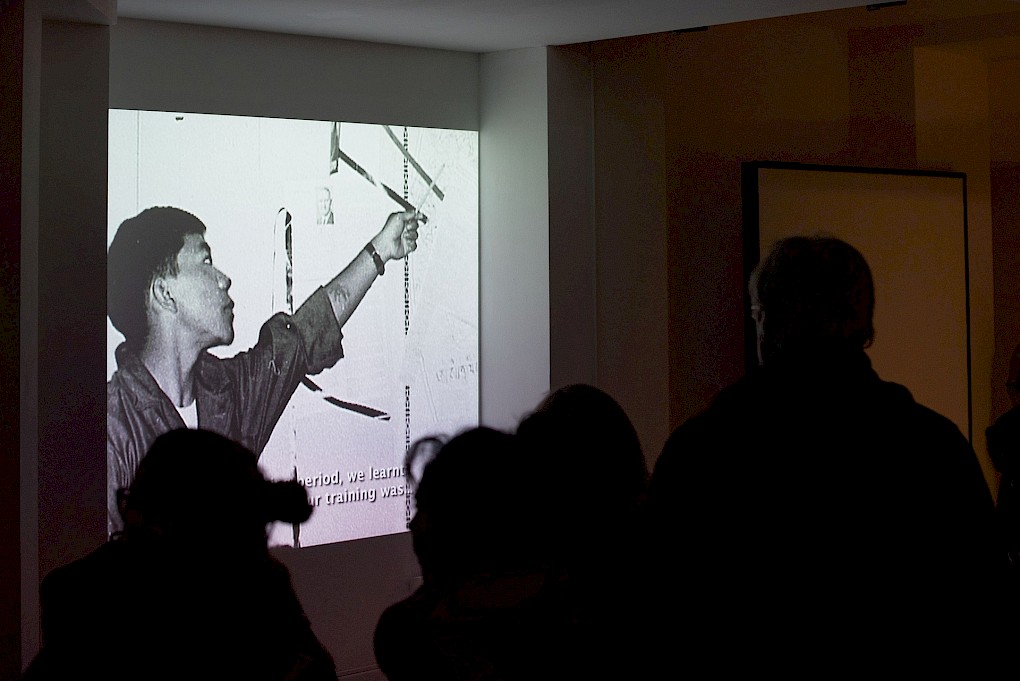

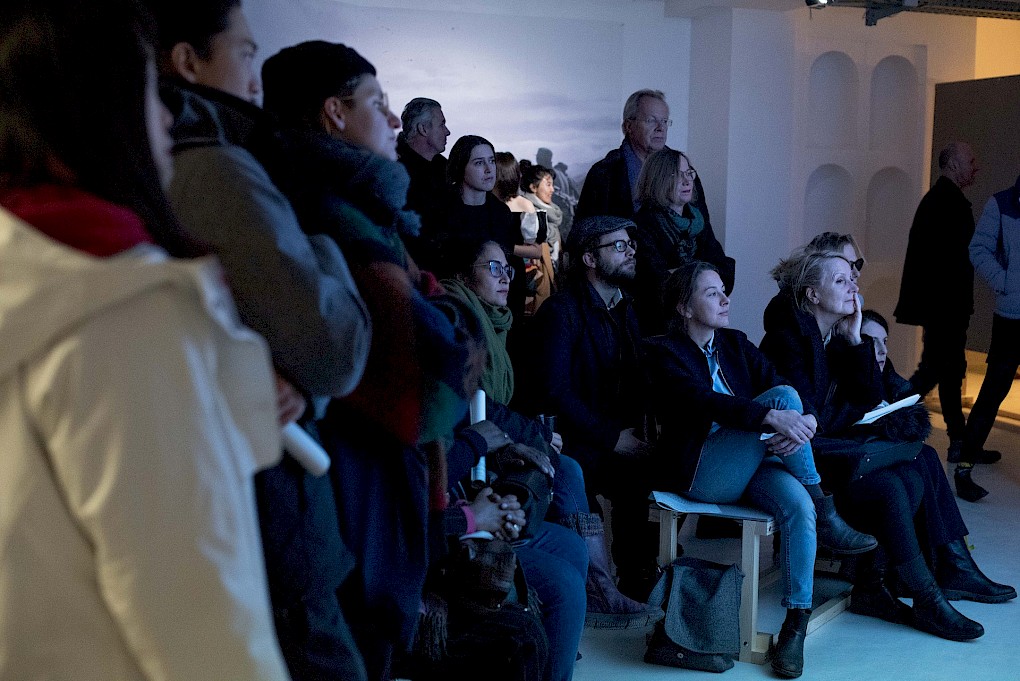


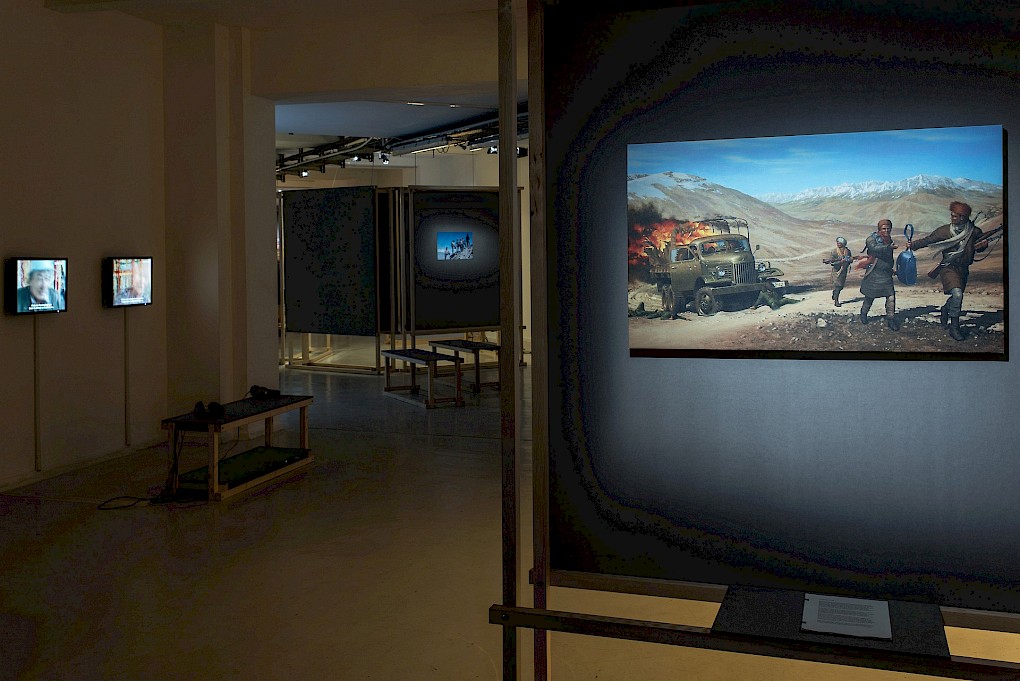
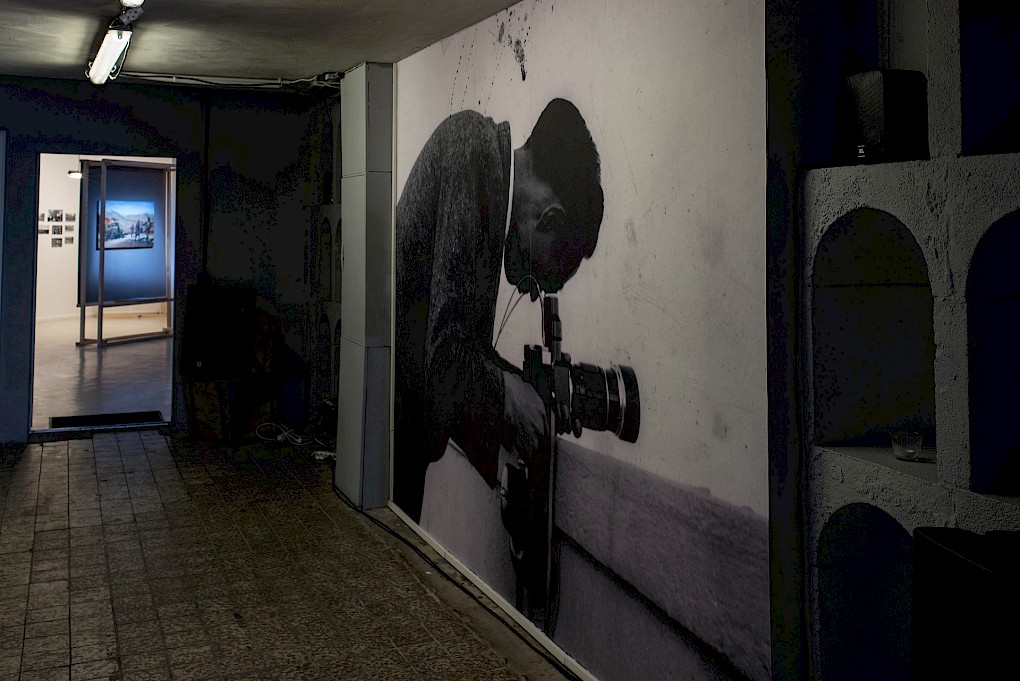

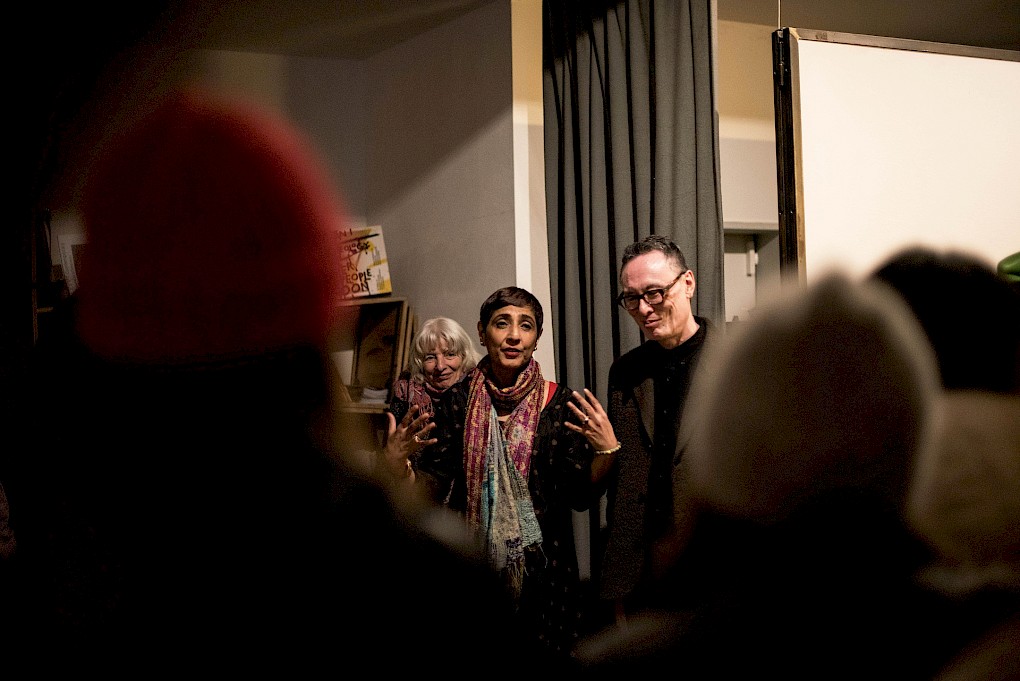

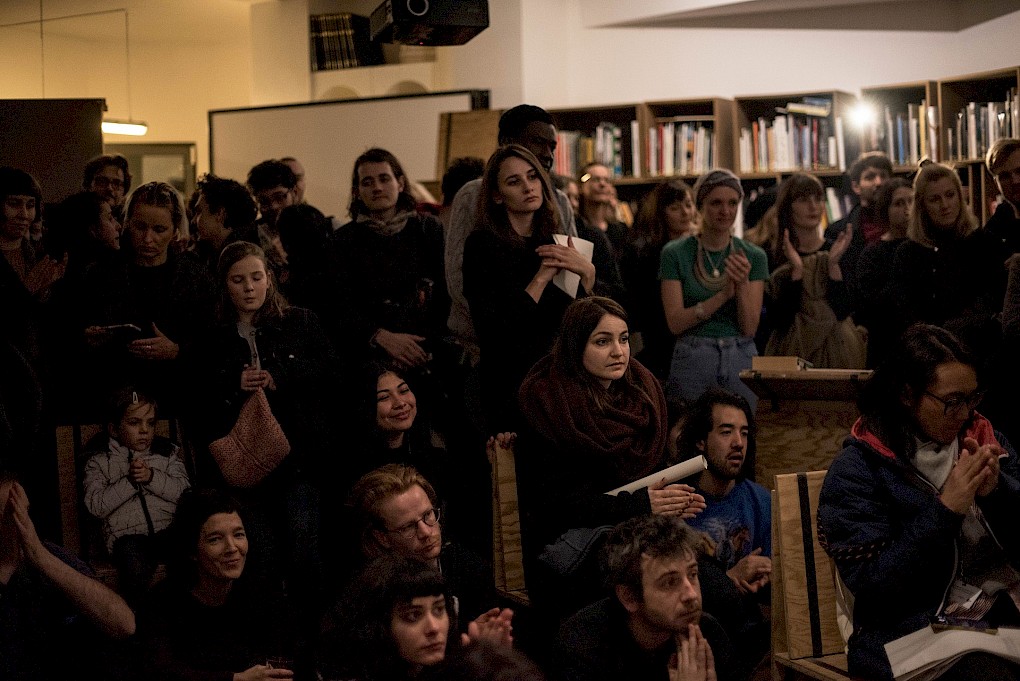
Catalogue
Ritu Sarin and Tenzing Sonam (Ed.)
Shadow Circus
With essays by Natasha Ginwala, Carole McGranahan, Bonaventure Soh Bejeng Ndikung, Jamyang Norbu and Tenzing Sonam
Designed by Mila Samdub
Limited Edition of 500 copies
7 €
CURATORs Natasha Ginwala, Bonaventure Soh Bejeng Ndikung
Assistant curator Krisztina Hunya
Production Beya Othmani, Abhishek Nilamber, Mila Samdub
MANAGEMENT Lema Sikod, Lynhan Balatbat-Helbock
Spatialization Ola Zielińska, Ada Zawadzka
COMMUNICATION Anna Jäger, Marleen Boschen
GRAPHIC DESIGN Elsa Westreicher, Lili Somogy
COPY EDITING Kelly Krugman, Monilola Ilupeju
tech Berth Günther, Emilio Cordero
ART HANDLING Wilson Mungai, Kimani Joseph
The exhibition is presented within the program of the 14th Forum Expanded | 69th Berlinale. Shadow Circus is a coproduction of SAVVY Contemporary and Arsenal–Institute for Film and Video Art in the framework of the longterm project The New Alphabet at Haus der Kulturen der Welt.
Shadow Circus is funded by the Hauptstadtkulturfonds Berlin, Goethe Institut New Delhi, the Foundation for Arts Initiatives and the Rowell Fund for Tibet.
Credit Visual White Crane Films/Lhamo Tsering Archives


